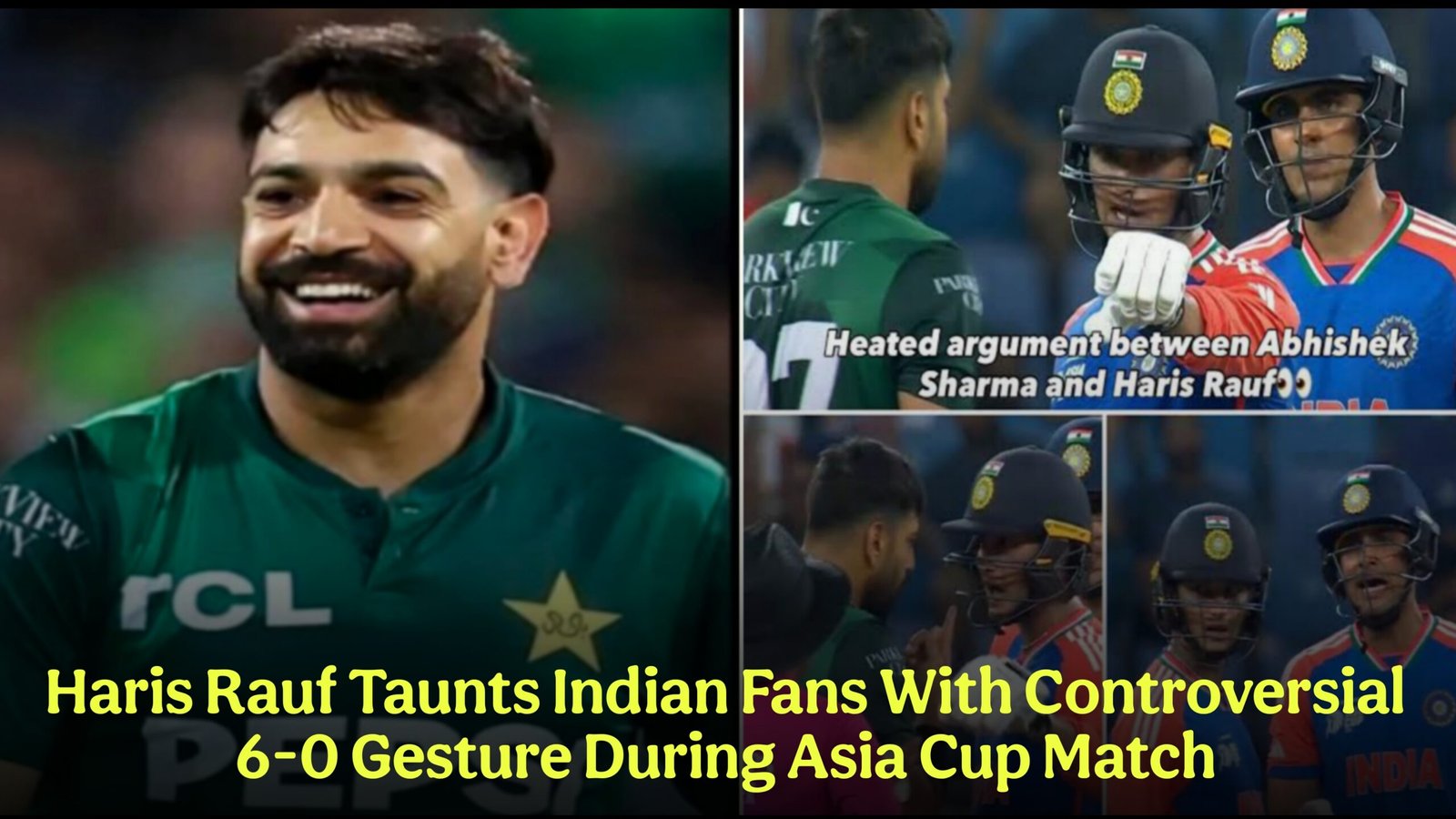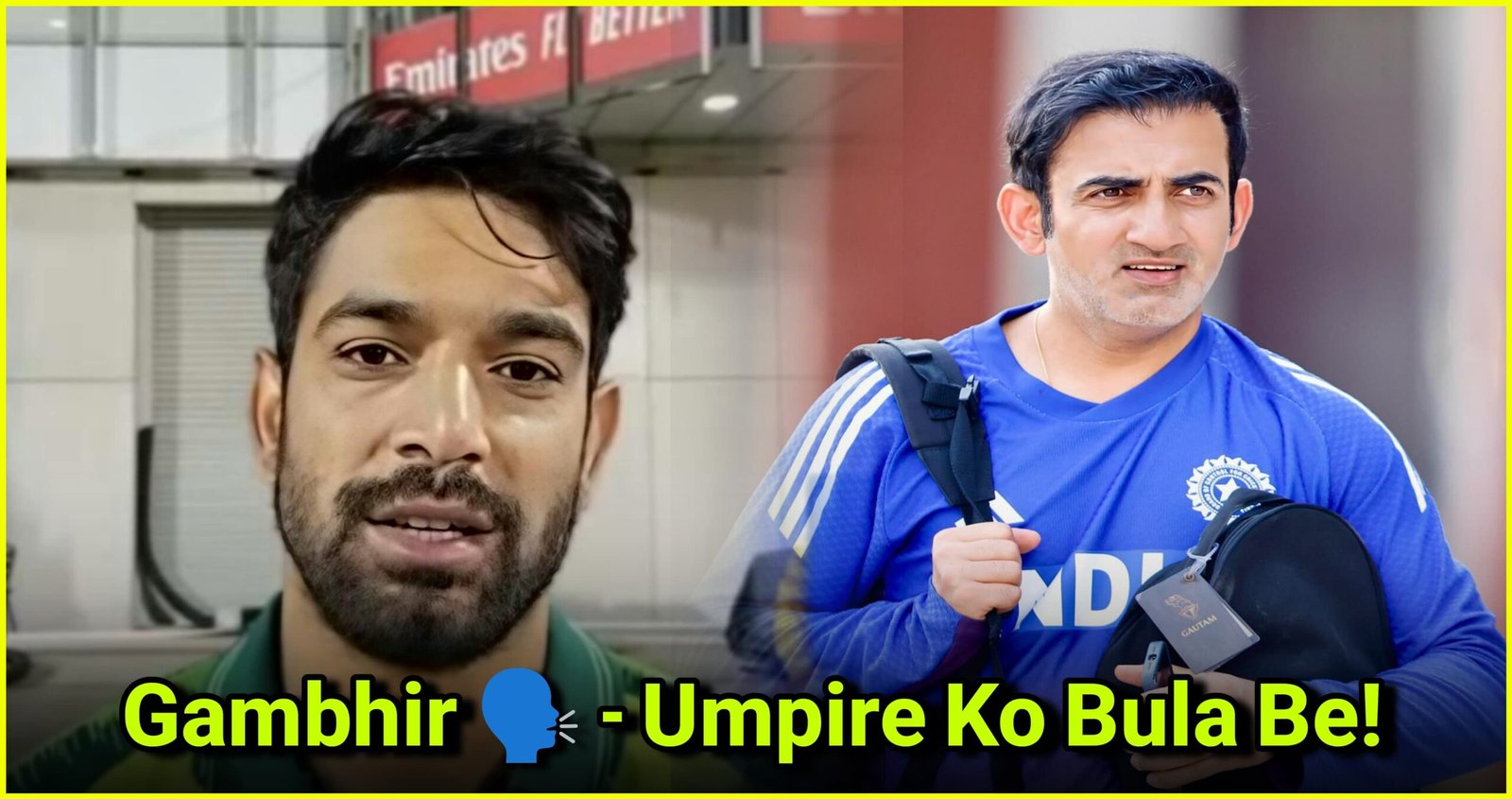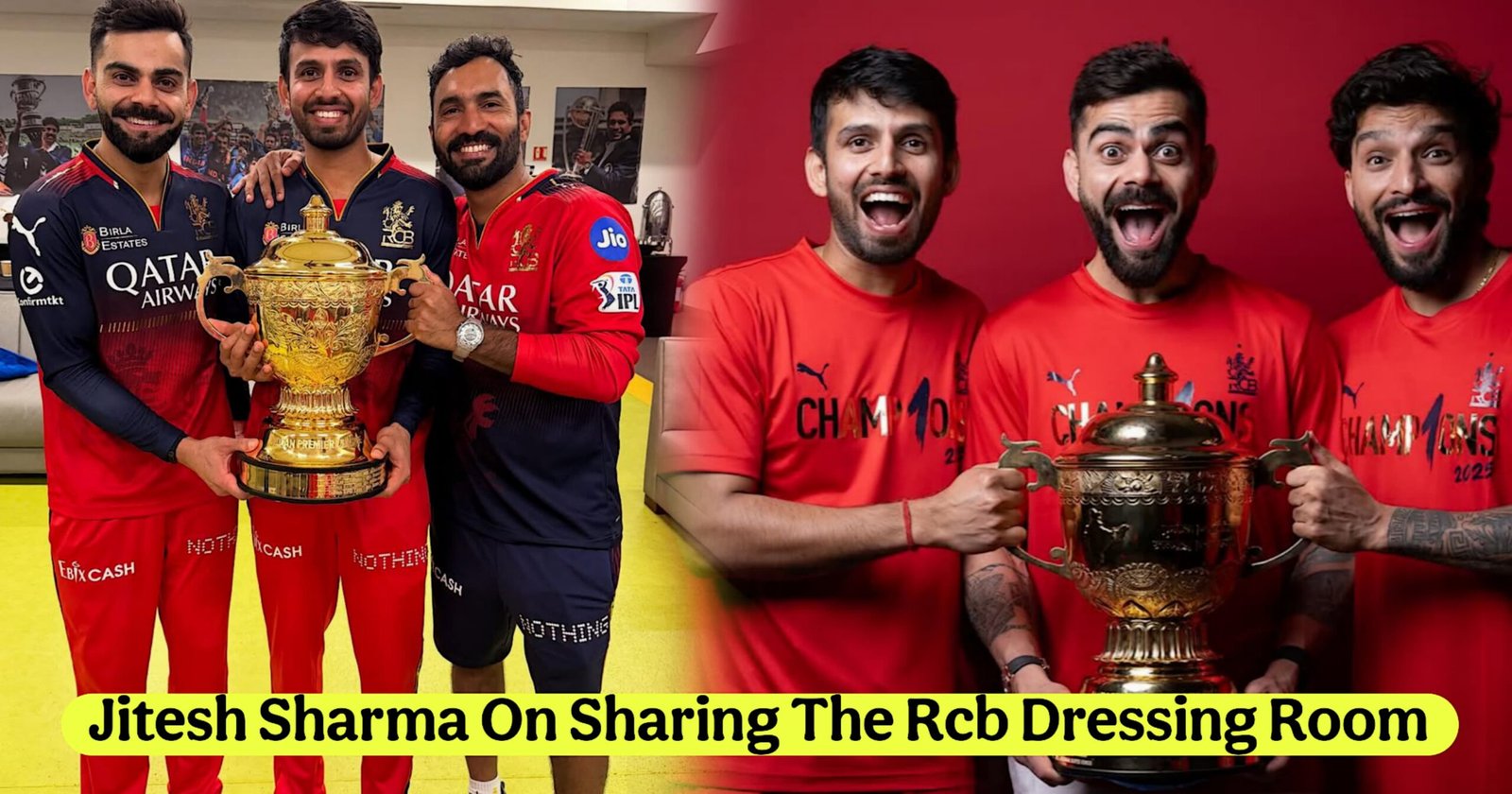The packed stadium buzzed with nervous energy as the Asia Cup showdown reached peak intensity. Suddenly, Pakistan’s fast bowler Haris Rauf struck, sending an Indian batsman back to the pavilion with a searing delivery. In a split-second, Rauf turned to the stands brimming with Indian fans and boldly flashed a six-fingered gesture followed by a closed fist (symbolizing 6-0). The signal was clear and unmistakable—a direct reference to Pakistan’s historical six Test series wins to India’s zero. A chorus of gasps, whistles, and cheers echoed. The familiar line between fierce competition and personal pride blurred right there on live television.
For fans, such a gesture is never just about cricket. It digs deep into the long, storied rivalry between India and Pakistan, two teams whose clashes carry the weight of history and emotion. Rauf’s taunt immediately lit up social feeds and sports news, reigniting heated conversations about respect, sportsmanship, and the limits of on-field celebrations—especially in tournaments as charged as the Asia Cup. Each match between these sides feels like more than a game; it becomes a theater of passion, memories, and endless debates.
The Moment That Ignited the Fire
It was September 2023 at the R. Premadasa Stadium in Colombo. The air was thick with suspense as India chased a challenging target set by Pakistan. Haris Rauf bowled a fierce spell and claimed a crucial wicket, dismissing a well-set Indian batsman. With the crowd roaring, Rauf faced a barrage of taunts from Indian fans in the stands.
Instead of ignoring the noise, Rauf responded. He looked towards the section with the loudest jeers and flashed a six-fingered gesture, then clenched his fist to show “6-0.” This symbol recalls Pakistan’s remarkable unbeaten record of winning six Test series against India in the past, something Pakistani fans take immense pride in.
Match officials quickly noticed the gesture but held off from any on-the-spot punishment. After the game, Rauf commented briefly, saying he was reacting to “constant provocation” and intended no disrespect. The incident left a mark, setting the stage for an even more charged atmosphere online and at the stadium.
Fan Reactions and Social Media Storm
Fans split instantly into rival camps. Indian supporters slammed Rauf’s move as crossing a line—many said it was unsportsmanlike and an insult to tradition. Pakistani fans, on the other hand, rallied around their star, calling the gesture a justified answer to repeated crowd slurs.
Social media platforms exploded:
- #HarisRaufTaunt trended worldwide on Twitter for 24 hours.
- Viral clips of the incident racked up over 8 million views within hours.
- Memes, GIFs, and parody videos filled Instagram and Facebook feeds.
Well-known personalities added fuel. Virat Kohli’s cryptic tweet about “respect in sports” drew speculation, while former Pakistan captain Shahid Afridi laughed it off on a sports talk show, calling it “part of the game.” Neither cricket board issued formal statements, but both urged fans to support their teams without hostility. Heated debates surged in comment threads, drawing hundreds of thousands into the virtual fray.
Indian Side of the Story
Indian fans and media outlets demanded the cricket authorities step in. Calls for fines or even match bans surfaced from BCCI officials and veteran commentators. An anchor on a prime-time sports show declared, “Gestures like this insult the spirit of the sport.” Many recalled similar moments from past matches, like the infamous Miandad-Kiran More incident, to highlight recurring flare-ups whenever the two sides play. The hurt ran deep, as Rauf’s gesture was viewed as a public assertion of dominance.
Pakistani Perspective and Support
Pakistani supporters framed Rauf’s gesture as playful payback. Social media buzzed with posts comparing crowd antics and celebrating Rauf’s boldness as an answer to hostile jeering from Indian fans in the stands. Pakistani cricket pundits argued that such banter is woven into South Asian sporting culture. Players and journalists highlighted how passion, not malice, drove Rauf’s actions, defending his right to stand up for himself and his team.
Broader Impact on Cricket Rivalry
This incident fuels an already intense India-Pakistan rivalry, echoing past controversies—think heated exchanges, ball-tampering debates, or on-field stare-downs. Officials and former players called for clearer codes of conduct to prevent future flare-ups. While purists frown at such drama, ratings and ticket sales often surge when the rivalry heats up. Rauf later clarified that he meant no disrespect, but the debate over passion versus professionalism stays alive. Still, these moments, rightly or wrongly, keep millions glued to the sport.
Conclusion
Haris Rauf’s 6-0 gesture put a magnifying glass on the electric mix of pride and pressure that defines India-Pakistan cricket. While such taunts inject drama, they also test the balance between fiery competition and mutual respect. As new tournaments loom on the horizon, fans and players alike hope for spirited clashes that celebrate cricket’s thrill without tipping into conflict. What do you think—does rivalry fuel the magic, or does it risk going too far? Share your views below.






